Sautéed nettles are a simple preparation, made only with nettles, but not everyone likes them because of the very intense flavor. To make this side dish more delicate, you can add a bit of ricotta, or use them to prepare a soup with potatoes. Alternatively, they can be turned into a delicious omelet or farifrittata without eggs.
What do nettles taste like? Strong, green, slightly grassy and metallic.
SEASON for #nettles – spring and autumn (when the shoots are tender), do not pick nettles with flowers or seeds.
RECIPES with nettles
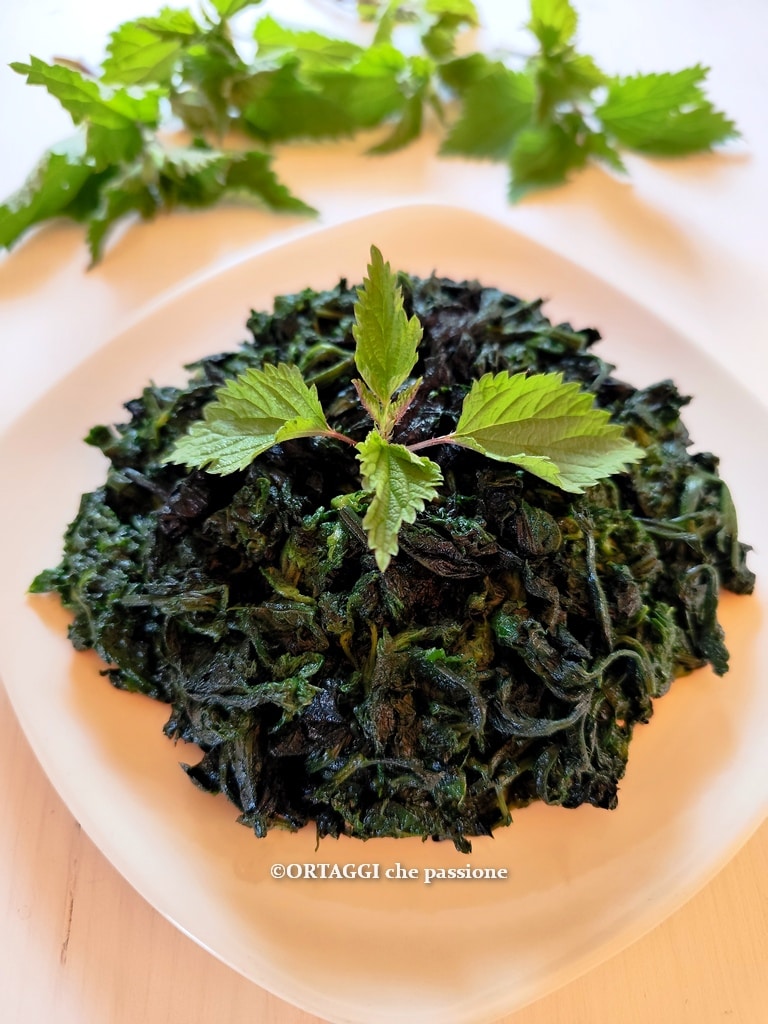
- Difficulty: Easy
- Cost: Very cheap
- Preparation time: 15 Minutes
- Portions: 4 People
- Cooking methods: Stovetop
- Cuisine: Healthy
- Seasonality: Spring, Autumn
- Energy 23.00 (Kcal)
- Carbohydrates 3.75 (g) of which sugars 0.13 (g)
- Proteins 1.36 (g)
- Fat 0.29 (g) of which saturated 0.03 (g)of which unsaturated 0.00 (g)
- Fibers 3.45 (g)
- Sodium 101.90 (mg)
Indicative values for a portion of 100 g processed in an automated way starting from the nutritional information available on the CREA* and FoodData Central** databases. It is not food and / or nutritional advice.
* CREATES Food and Nutrition Research Center: https://www.crea.gov.it/alimenti-e-nutrizione https://www.alimentinutrizione.it ** U.S. Department of Agriculture, Agricultural Research Service. FoodData Central, 2019. https://fdc.nal.usda.gov
Sautéed Nettles
- 7 oz nettles
- to taste water
- 1 pinch salt
- 1 drizzle extra virgin olive oil (or peanut oil – optional*)
Optionally, stew with a drizzle of oil and a clove of garlic, or in a sauté of onion. Alternatively, boil with a trickle of water.
Tools
- Gloves latex
- Frying Pan with lid
Sautéed Nettles
Wear gloves to prevent stinging and use scissors. Pick the most tender tops, usually the first 4-6 inches of the plant. Choose clean areas, away from busy roads or treated fields.
How to recognize edible nettle? Recognizing edible nettle is easier than it seems, but it requires some attention. The most common species used in cooking is the Urtica dioica, the so-called greater nettle. It has intensely green leaves, oval-lanceolate in shape, with toothed edges and a slightly rough surface. They grow opposite on the stem (that is, two by two opposite each other) and are covered with stinging hairs, which are the ones responsible for the sting when you touch it raw. The stem is also often hairy and can feel slightly square to the touch.
Wear gloves (latex) to avoid stinging and rinse them well under running water. Also, let them soak for a few minutes, then drain them.
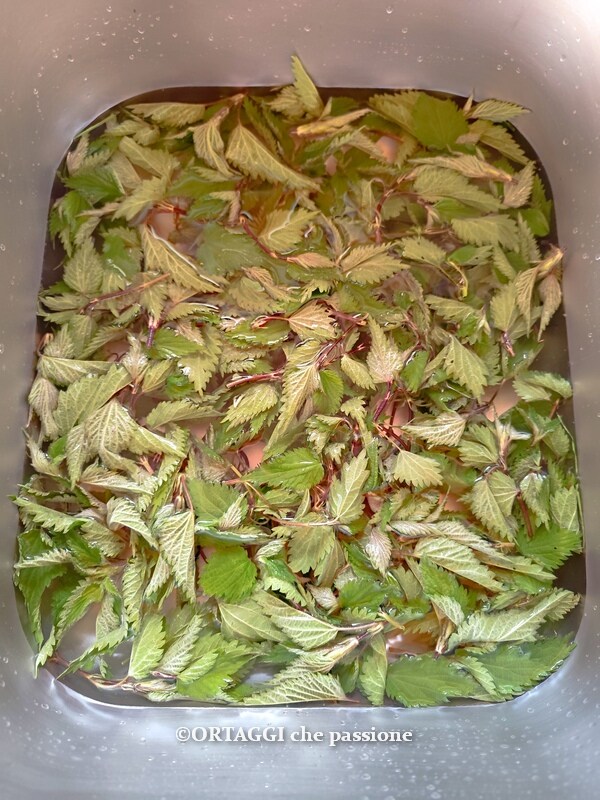
As soon as they get wet, they lose their stinging power.
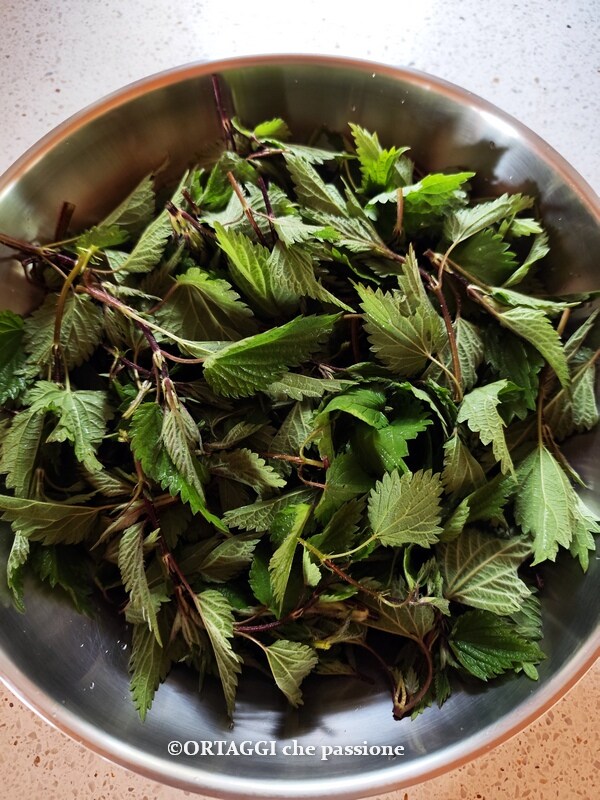
In a pan, add the nettles with a little water and, optionally, a drizzle of oil. Salt, cover, and stew over medium heat.
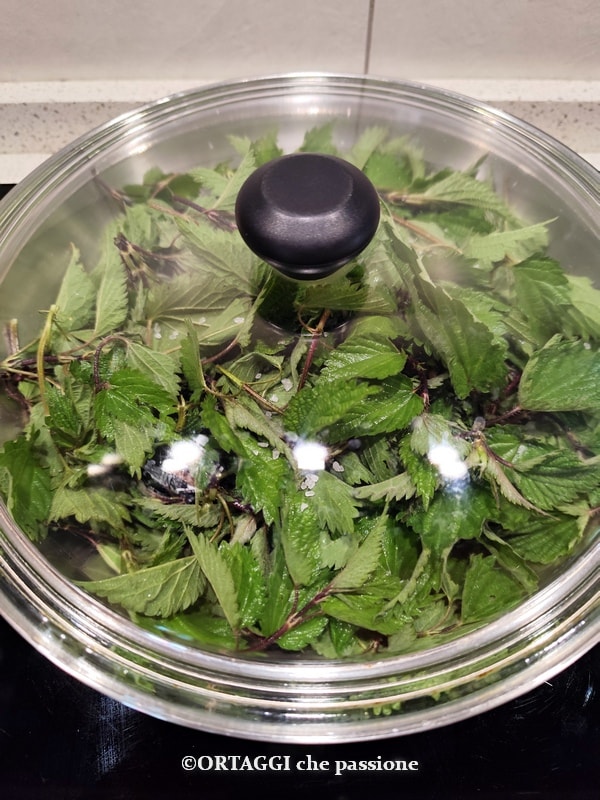
Stir occasionally and cook them until they soften; if necessary, add more water or uncover to let them dry.
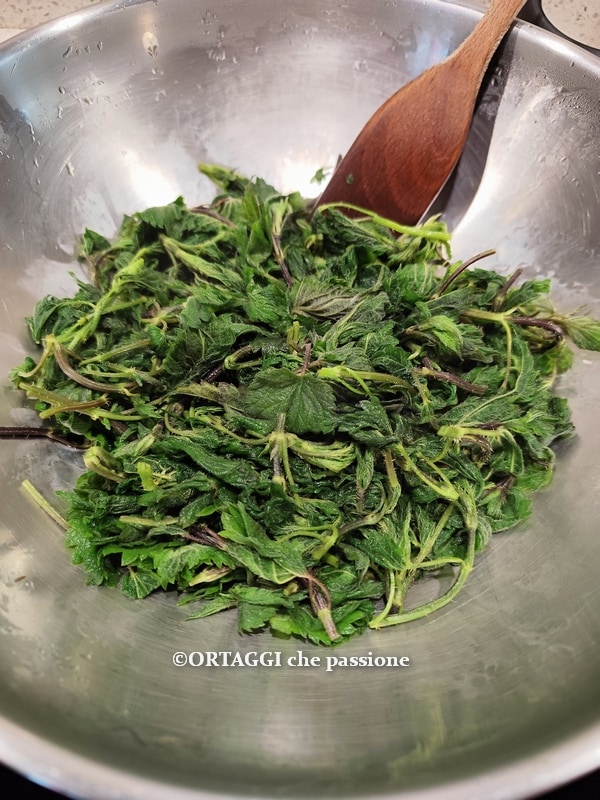
Bring a pot of water to a boil, add the nettles, and cook them for about 10 minutes or until they become tender. Drain them well.
STORING Sautéed Nettles
Sautéed nettles can be stored in the fridge for up to 4 days if well sealed in an airtight container.
They can also be frozen once cooked and will keep for a couple of months, ready to use in other preparations.
FAQ (Questions and Answers)
How can sautéed nettles be eaten?
They are perfect for making soups, risottos, gnocchi, omelets (or vegan farifrittatas), savory pies, and even fresh green pasta like tagliatelle.
They are also used in fillings (tortellini, ravioli), together with ricotta or tofu, or blended to create creams and sauces. And if you like experimenting, you can try making a pesto.Can I use any type of nettle?
Yes, but it’s important to pick them in clean places, away from busy roads or areas treated with pesticides. The younger and more tender leaves, especially those at the top, are the best.
Does the sting disappear with cooking?
Once cooked, nettles completely lose their stinging power and become soft and flavorful, similar to spinach but with a more pronounced taste.
What are the properties of sautéed nettles?
Cooked nettles are rich in vitamins (especially A, C, and K) and minerals such as iron, calcium, and magnesium, making them a great ally for bone health, skin, and the immune system. They are also an excellent source of antioxidants and fiber, promoting digestion and intestinal well-being. Additionally, due to their anti-inflammatory properties, they can help counteract muscle and joint pain.

